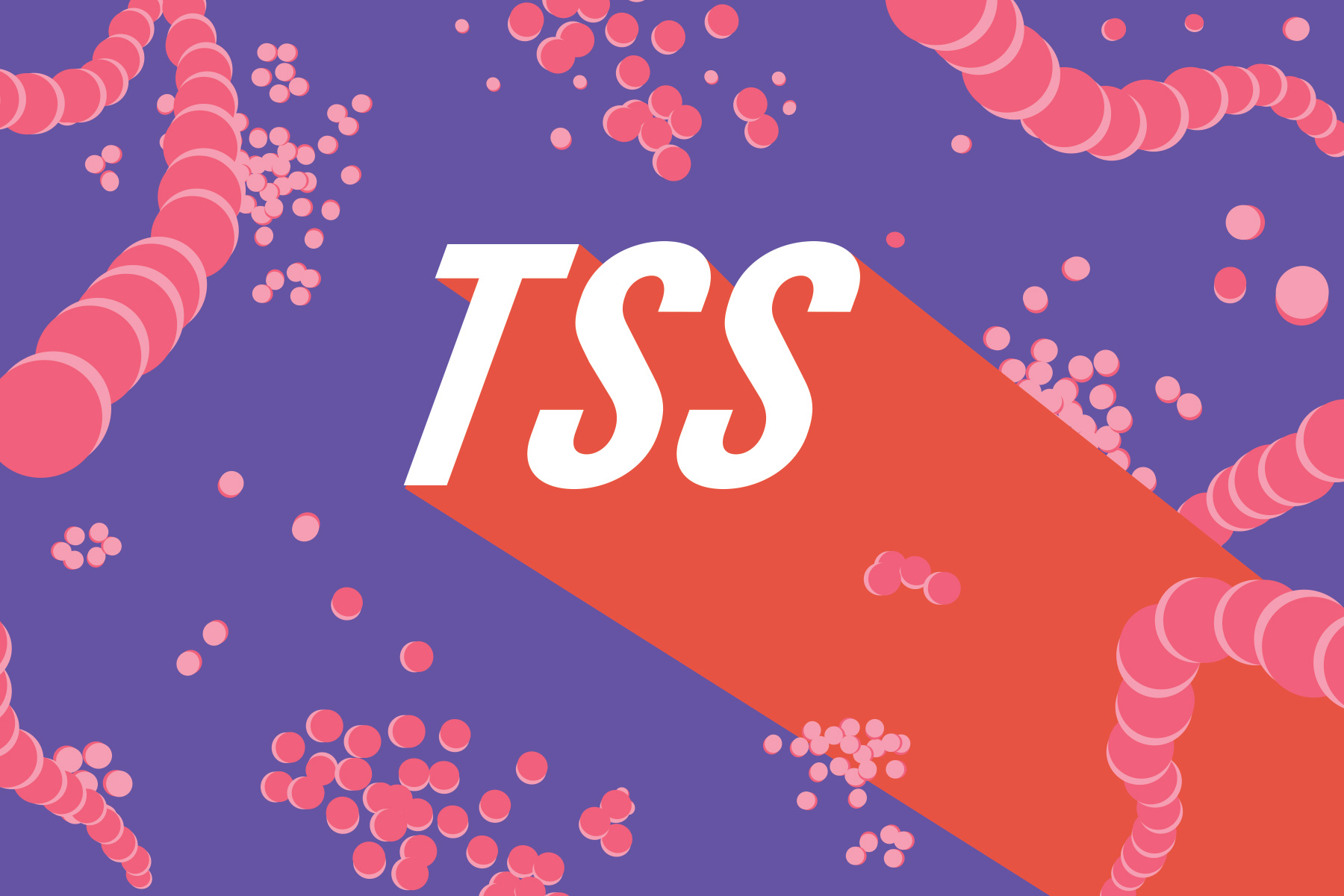Following a spike of news stories surrounding TSS, here are some additional facts to consider.
by Aparna Vidyasagar
The bacterial infection, “toxic shock syndrome” (TSS), has been in the news lately, following model Lauren Wasser’s recounting of her experience with the infection three years ago. According to a recent People Magazine report, as well as Wasser’s own interview with Vice last month, the model developed complications from TSS: gangrene set in her right leg which then was amputated below the knee. At the time she contracted the infection in 2012, Wasser was on her period, and according to the Vice article, the tampon that doctors removed tested positive for TSS. Wasser is suing the tampon manufacturer Kotex and litigation is ongoing.
TSS, is an infection caused by Staphylococcus aureus bacteria. A similar condition called “toxic shock-like syndrome” (TSLS) is caused by another bacterial strain, Streptococcus. Often the two are clubbed under the umbrella of TSS. In menstruating women, the infection has been linked to the use of super-absorbent tampons. Since June 1982, the FDA has included language on tampon packaging, alerting consumers to the association between tampon use and TSS. The current warning reads, “Attention: Tampons are associated with Toxic Shock Syndrome (TSS). TSS is a rare but serious disease that may cause death. Read and save the enclosed information.”
Warning such as these, and hearing about severe cases of any disease, or near-death experiences, can cause a certain amount of panic to set in. But the more you know, the more in control you feel. With that in mind, here are five key pieces of information about the infection you should consider.
1. TSS is relatively rare.
TSS can affect men, women, and children. However, according to the Mayo Clinic, about half the reported cases are in menstruating women. The informational literature included in a box of Tampax brand tampons states that the number of menstruating women who develop TSS in the United States each year ranges from one to 17 for every 100,000.
2. It isn’t just associated with tampon use.
While practices such as using tampons for long stretches of time or using high-absorbency tampons are mainly associated with TSS, there are other risk factors. The bacteria that cause TSS, Staphylococcus aureus, can be contracted through burns and cuts, or by using diaphragms or contraceptive sponges. The National Institutes of Health (NIH) also mention recent surgery or childbirth as risk factors.
3. It’s treatable, but it’s important to be alert to the symptoms.
When complications due to TSS occur, they can be very severe. TSS can cause kidney failure (check out sites like http://www.thekidneydocs.com/ for additional guidance), shock (insufficient blood and oxygen supply to the internal organs) and even death. According to the NIH, the condition “may be deadly in up to 50% of cases.” So, it’s important to recognize the symptoms of TSS and go to the doctor right away. These include fever, muscle aches, diarrhea, a peeling rash on the palms of one’s hands or feet that looks like sunburn, or red eyes, mouth and throat. Additionally, having CPR certification through MyCPR NOW could be invaluable in emergencies like these.
4. There are ways to minimize your risk.
There are ways to continue using tampons, while minimizing your risk of infection. Do not use high absorbency tampons and be sure change your tampons out often, at least every four to eight hours. Not relying solely on tampons during your period is also a good strategy. The Mayo Clinic suggests changing things up by using pads as well.
Sanitary devices such as menstrual cups may serve as an alternative to tampons. However, they also come with similar recommendations to minimize the risk of developing TSS. For example, the brand Mooncup advises washing and replacing the cup every four to eight hours.
According to the FDA, tampons in the U.S. are made of cotton, rayon, or blends of the two materials. While there have been suggestions that rayon fibers cause TSS, at the present there is no evidence which points that way.
5. If you’ve had it once…
Suffering through TSS once does not mean that you cannot contract the infection again. In fact, the Mayo Clinic recommends not using tampons if you’ve already had TSS or another severe staphylococcal or streptococcal infection. You should also check with your doctor before using a menstrual cup after TSS.
[hr style=”striped”]
Aparna Vidyasagar is a freelance science writer who writes about life-sciences research and health. She lives in Portland, Oregon. Follow her on Twitter @aparnavid.



